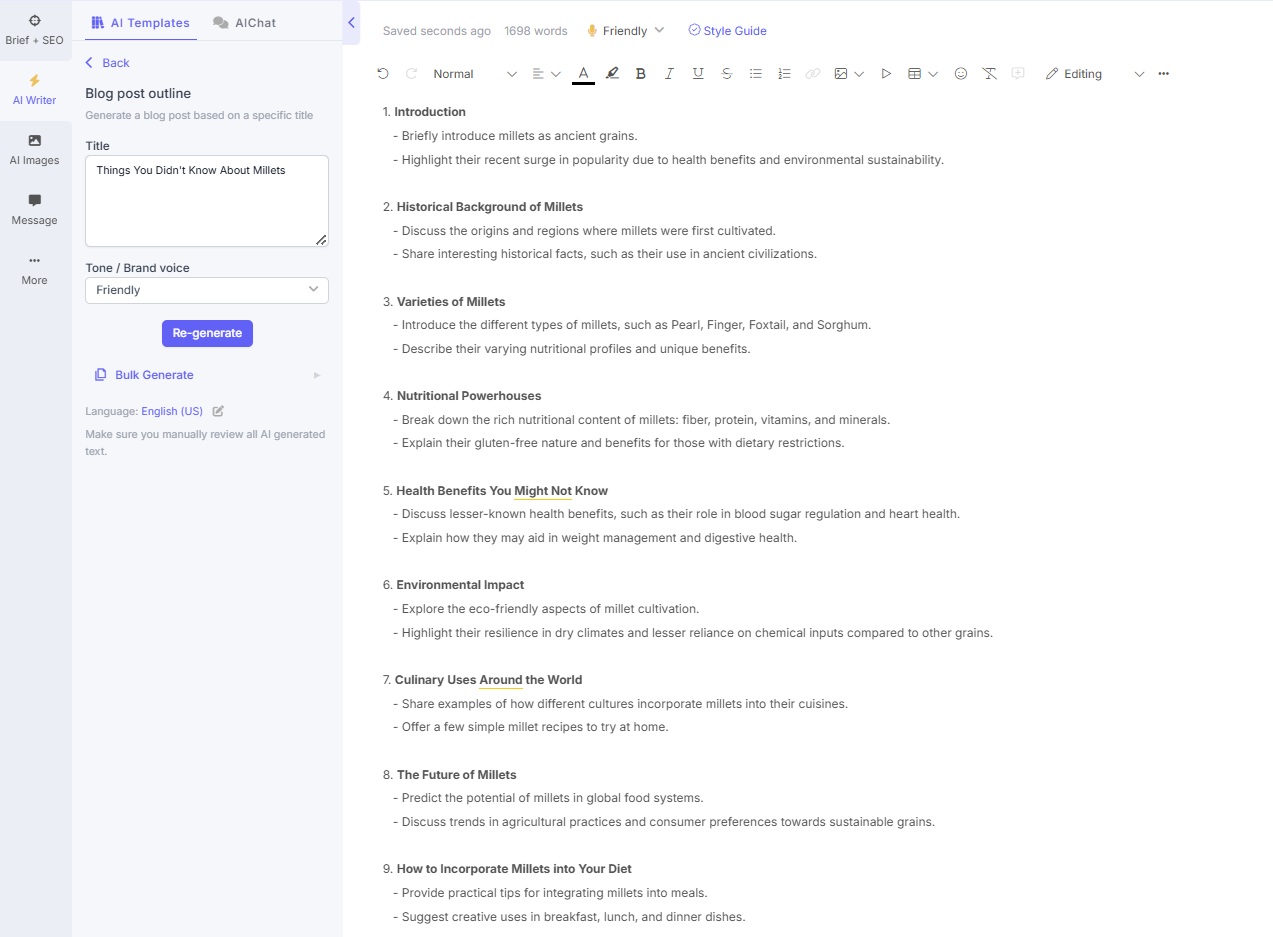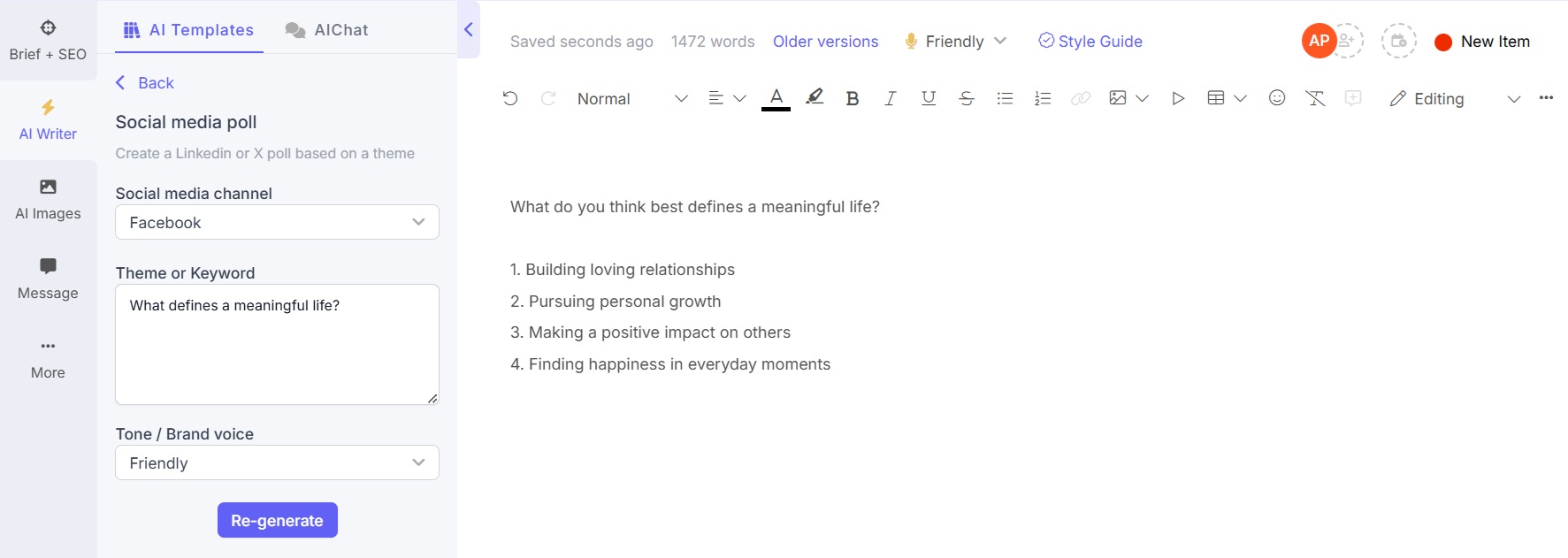From an evolving Google SERP layout to the increasing reliance among consumers and marketers on generative AI (Gen AI) tools, the digital marketing landscape has been stirred, if not shaken. Adapting content marketing strategies to these developments is the way to go for B2C brands. Let’s look at some of the best B2C content marketing strategies for 2025.

Maintain a strong SEO game
With Google’s SERP layout looking a lot different than before, traditional SEO strategies are no longer sufficient to drive visibility.
- Featured Snippets — which pull information directly from the source page and includes the page’s link — are more diversified with images and videos. Getting into Featured Snippets can enhance visibility, boost authority, and increase traffic. It’s not easy but some tactics may help:
- Answering questions directly
- Targeting long-tailed keywords, which are typically the type of queries for which Feature Snippets show up (the People Also Ask section is great for identifying them)
- Creating structured content with headers, bullet points, and lists can help Google easily identify and display content relevant to searchers’ queries
- Using schema markup provides Google additional context about your the content on your page
- Incorporating images, infographics, and video into content may make your content appear more attractive to Google and users; ensure image and video tags align with the content they convey.
- More zero-click searches in the form of AI Overviews are pushing results lower and affecting click-through rates. A study of over 18 million websites found that AI Overviews drive more traffic than Featured Snippets. Tactics to increase your chances of being featured in AI results on Google and Bing:
- Answer user intent clearly and succinctly
- Work towards ensuring your website has strong Experience, Expertise, Authoritativeness, and Trustworthiness (E-E-A-T) signals
- Optimize for Google’s core ranking systems
- Improve content quality to genuinely satisfy user queries and demonstrate a high level of E-E-A-T. If time constraints prevent you from creating content regularly, AI writing assistant Narrato can help. Consider these use cases of Narrato to create and optimize content even with limited time:
- Get blog topic ideas
- Create blog outlines
- Enhance keyword research
- Generate SEO briefs
- Expand or shorten sentences
- Paraphrase or rewrite sentences or paras
- Check grammar and spelling, and refine content
- Simplify text


Make sure you review the content AI generates and maintain the human touch and expertise necessary to engage customers and make a positive impression before search engines. Remember, AI is a tool to help human creators work more efficiently and scale content. It cannot create the ‘perfect content’ that a human writer can aspire to, but can assist in achieving the desired level of perfection by helping personalize content, optimize content with keywords, and analyze content.
Dial up user-generated content
When it comes to purchase decisions, people trust relatives, friends, and fellow consumers over advertisements, celebrities, and influencers. Word-of-mouth is powerful, and B2C social media and customer experience leaders have used it to their advantage, investing heavily in user-generated content (UGC).
Why produce more user-generated content?
- Content created by customers enhances confidence in your brand’s credibility and product quality
- Being open to diverse perspectives on products and services helps consumers make better and faster purchase decisions
- People demonstrate their loyalty by recommending brands to others
- When people participate in UGC campaigns, they brag about it, helping boost reach and awareness
Types of user-generated content
Visual
- Customer-generated product photos
- “Before and after” images highlighting product benefits
- Unboxing videos showcasing first impressions
- Instagram Posts and Stories showing or demonstrating product use
Written
- Customer reviews on e-commerce and brand websites
- Testimonials shared on social media or company pages
- Blog posts detailing personal experiences with the product
Video
- Product demonstration and how-to videos
- Customer testimonials and experience videos
- Live social media streams showcasing real-time product usage
Novel ideas to explore
- Collaborative storytelling – Launch campaigns where each user adds a chapter or element to an ongoing story, perhaps tied to your brand narrative. This works especially well on platforms like Instagram Stories or TikTok.
- Reverse reviews – Instead of asking for traditional reviews, invite customers to share how they’ve customized or uniquely used your product. This generates authentic content while showcasing product versatility.
- Time capsule campaigns – Ask users to create content now that will be revealed at a future date, building anticipation and engagement over time.
- Incentivize engagement beyond discounts:
- Tiered loyalty rewards for UGC – Give points or perks for different types of user content (photo = X points, video = Y points).
- “Pay with a post” flash sales – Let users unlock exclusive deals by sharing content.
- “Review for a cause” initiative – Donate to a charity when a user submits a review or testimonial.
Check out examples of eCommerce brands that successfully leveraged UGC content.


Increase product discovery for GenAI inquiries
Generative AI inquiries for discovering products and researching for more information on products or comparing products are on the rise. It’s just the beginning of this landmark shift, as this article discusses, but worth exploring among other content marketing strategies for 2025.
Tips on preparing for AI-driven product discovery journeys
- Create AI-friendly content – Ensure product descriptions, blog posts, and FAQs are structured with clear, concise, and well-optimized information that AI can easily reference.
- Utilize structured data and schema markup – Use structured data (like FAQ schema) on your website to improve how AI tools fetch and present your product details.
- Build domain authority – Since AI often pulls from high-authority sources, focus on getting reputable backlinks, customer reviews, and mentions across digital publications.
- List products on AI-integrated marketplaces – Many AI tools pull from platforms like Amazon, Google Shopping, and Shopify. Make sure your product listings are optimized and active.
- Publish AI-optimized content – To enhance the visibility of your content in AI-driven search results for product recommendations in 2025, it’s essential to craft titles and headings that clearly state the product category and include the current year. For example, use titles like “Top-Rated Wireless Earbuds in 2025” or “Best Smartwatches for 2025.”
Tailor your content for AI algorithms with care, ensuring that it genuinely serves users’ needs. As always, prioritize creating content that offers real insights, expert evaluations, and comprehensive details. Optimize ethically to improve discoverability without compromising the integrity of your content.
Create content for all your audience segments
57% of B2C marketers say creating content aligned to different target audiences is a challenge. Specifically, the issues are:
- Filtering through volumes of data to discover valuable information
- Outdated, irrelevant, or incorrect data
- Non-unified customer profiles
- Data privacy regulations
- Challenges with omnichannel personalization
Solutions
- Customer Data Platform (CDP): Consolidate and unify customer information across touchpoints by implementing a CDP, enabling a comprehensive 360-degree view of customer behavior, preferences, and interactions.
- Data cleansing solutions: Utilize automated data cleansing solutions to systematically detect and fix data quality issues, ensuring your datasets remain accurate and reliable for analysis.
- Use personalization responsibly:
- Get consent before using customer data
- Explain what data is needed, why it is needed, how it will be used, who will have access to it, and when will be used
- Implement strong security solutions to keep customer data safe
- Report data breaches
- Generative AI for marketing can allow for more targeted content:
- Typeface, a Gen AI marketing platform that counts among its customers, enterprise B2C companies, facilitates content personalization. It’s easy and practical for any content marketing team. You save your audience profiles with demographics and behavioral data on the platform and apply it to any content you generate on it. Typeface will automatically adjust messaging to match each segment’s preferences and priorities. You also have the option to import existing segments from your customer data platform to provide the AI existing customer intelligence for precise targeting.
Check out this framework for creating diverse, inclusive customer-centric content.
Use popular social media content formats
The best B2C marketing strategies include a solid social media content plan and ensure the availability of creative capabilities to implement winning campaigns. Images and video content generally drive the highest engagement across most platforms, but knowing which content formats resonate most with your target audience and why will help you manage your time on social media marketing more efficiently and help boost results.
Top-performing social media content
- Short-form video (Reels, Shorts, TikTok)
- Photo posts
- Photo carousels
- Live streams
- Polls
- Tutorial videos
Examples of social media storytelling done well
You can create social media posts and brainstorm meme ideas faster with Narrato. The AI social media post generator creates engaging text posts with images and polls for Instagram, X, and Facebook. Here’s a poll Narrato created within seconds.


Make 2025 your most engaging year yet
A strong content marketing strategy considers your audience’s social media consumption habits and purchase behaviors. It focuses on personalizing and scaling content efficiently, and is flexible to adapt to the shifting digital marketing landscape and industry trends. Additionally, it keeps the doors open to using Generative AI to save more time for strategic and creative marketing tasks that require human insight, originality, and emotional intelligence. Even as you evaluate the strategies in this post, see how Narrato can make content marketing more streamlined, efficient, and effective — try the AI writing assistant on a 7-day free trial.













